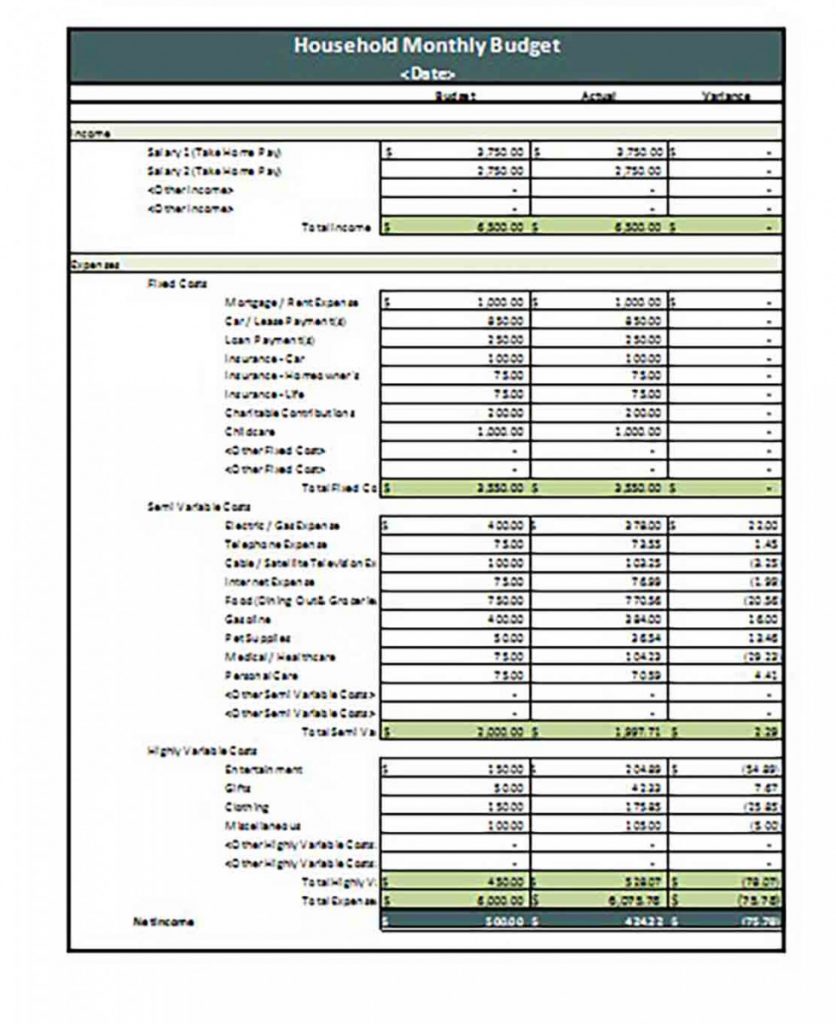

If we focus on early-industrialized countries, we can see that there are four broad periods in this chart.
#Average household monthly expenses government usa 2016 series#
’ but bear in mind that the series for most non-OECD countries are much shorter. You can plot other countries in this visualization by selecting ‘ The above-mentioned long-run series are complemented in this dataset by comparable recent estimates for most countries in the world. Non-OECD countries with available long-run data include Russia, India, Argentina, Brazil, Peru and Colombia. The long-run series in this dataset cover mainly, but not exclusively OECD countries. The visualization shows the evolution of government expenditure as a share of national income, for a selection of countries over the last century. Various measures of social expenditure as share of GDP.

Two measures of government expenditure as a share of GDP.Total government expenditure per capita.Systems tracking and making public allocations for gender equality and women's empowerment.Share of social protection in government expenditure.Share of employee compensation in public spending.Reduction in income inequality before and after tax OECD.Public social spending as a share of GDP.Public education expenditure as share of GDP.Health spending as a share of total government expenditure.Government spending as a share of GDP vs.Government procurement as share of government expenditure, OECD.Government health expenditure as a share of GDP.General government procurement as a percentage of GDP, OECD.
 Expenditures on general government outsourcing as share of GDP. Education spending as a share of total government expenditure. Central government expenditure as share of GDP. In the period 2005-2010 alone, the total value of PPP projects in low and middle-income countries more than doubled. And public-private partnerships (PPP), in particular, have become an increasingly popular mechanism for governments to finance, design, build and operate infrastructure projects. Recent data on public spending also shows that governments around the world often rely on the private sector to produce and manage goods and services. Relative to low-income countries, government expenditure in high-income countries tends to be much larger (both in per capita terms, and as share of GDP), and it also tends to be more focused on social protection. Recent data on public spending reveals substantial cross-country heterogeneity. In early-industrilized countries, specifically, the historical data shows that public spending increased remarkably in the 20th century, as governments started spending more resources on social protection, education and healthcare. The available long-run data shows that the role and size of governments around the world has changed drastically in the last couple of centuries. We begin with an analysis of historical trends, and then move on to analyze recent developments in public spending patterns around the world. In this entry we study public spending through the lens of aggregate cross-country data on government expenditures. Public spending enables governments to produce and purchase goods and services, in order to fulfil their objectives – such as the provision of public goods or the redistribution of resources.
Expenditures on general government outsourcing as share of GDP. Education spending as a share of total government expenditure. Central government expenditure as share of GDP. In the period 2005-2010 alone, the total value of PPP projects in low and middle-income countries more than doubled. And public-private partnerships (PPP), in particular, have become an increasingly popular mechanism for governments to finance, design, build and operate infrastructure projects. Recent data on public spending also shows that governments around the world often rely on the private sector to produce and manage goods and services. Relative to low-income countries, government expenditure in high-income countries tends to be much larger (both in per capita terms, and as share of GDP), and it also tends to be more focused on social protection. Recent data on public spending reveals substantial cross-country heterogeneity. In early-industrilized countries, specifically, the historical data shows that public spending increased remarkably in the 20th century, as governments started spending more resources on social protection, education and healthcare. The available long-run data shows that the role and size of governments around the world has changed drastically in the last couple of centuries. We begin with an analysis of historical trends, and then move on to analyze recent developments in public spending patterns around the world. In this entry we study public spending through the lens of aggregate cross-country data on government expenditures. Public spending enables governments to produce and purchase goods and services, in order to fulfil their objectives – such as the provision of public goods or the redistribution of resources.







 0 kommentar(er)
0 kommentar(er)
